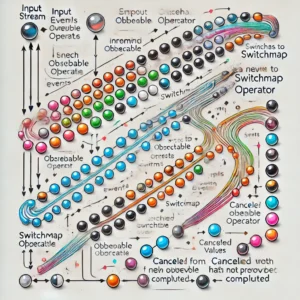The Singleton Pattern stands as one of the foundational design patterns in software engineering, often revered yet occasionally misunderstood. As a software developer, I have come across the Singleton pattern numerous times in my career. However, I have also seen it being misused and misunderstood by many developers. This is why I decided to write this article to demystify the Singleton pattern and provide a clear understanding of its purpose, implementation, and best practices.
The Singleton pattern is a design pattern used in object-oriented programming. It ensures that a class has only one instance, and provides a global point of access to that instance. This pattern is particularly useful when we need to limit the number of instances of a class to one, such as when we need to control access to a shared resource or when we want to maintain a single point of control for a system-wide configuration.
In this article, I will explain the Singleton pattern in detail, including its purpose and how it should be implemented correctly. I will also discuss some best practices for using the Singleton pattern, such as thread safety and avoiding global state. By the end of this article, you will have a clear understanding of the Singleton pattern and how to use it effectively in your software development projects.
Understanding the Singleton Pattern
Definition and Purpose
As a creational design pattern, the Singleton pattern ensures that a class has only one instance and provides a global point of access to that instance. This means that when a Singleton class is instantiated, it creates a single instance that is shared throughout the application.
The purpose of the Singleton pattern is to provide a way to control and limit the number of instances of a class that can be created, while also providing a global point of access to that single instance. This can be useful in situations where you need to ensure that only one instance of a class is created, such as when working with shared resources or managing system-wide configurations.
Use Cases and Scenarios Where Singleton is Beneficial
Singleton pattern is beneficial in a variety of use cases and scenarios, including:
- Managing system-wide configurations: A Singleton class can be used to manage system-wide configurations, such as database connection settings, by providing a single point of access to these settings throughout the application.
- Working with shared resources: When working with shared resources, such as a shared cache or thread pool, a Singleton class can be used to ensure that only one instance of the resource is created and shared throughout the application.
- Controlling access to resources: A Singleton class can also be used to control access to resources, such as limiting the number of instances of a particular class that can be created.
Overall, the Singleton pattern is a useful tool for managing shared resources and limiting the number of instances of a class that can be created. By providing a global point of access to a single instance, the Singleton pattern can help improve the performance and efficiency of your application.
Implementation of Singleton Pattern
Basic structure and principles
The Singleton Pattern is a design pattern that restricts the instantiation of a class to one object. This pattern is used to control the creation of objects, ensuring that only one instance of a class exists in the system. The basic structure of the Singleton Pattern consists of a private constructor, a public static method, and a static variable that holds the instance of the class.
The private constructor is used to prevent the creation of objects outside the class, while the public static method is used to provide access to the instance of the class. The static variable holds the instance of the class and is initialized only once, during the first call to the public static method.
Different implementation methods in popular programming languages
The Singleton Pattern can be implemented in various ways in different programming languages. In Java, the Singleton Pattern can be implemented using lazy initialization, eager initialization, or static block initialization. In C#, the Singleton Pattern can be implemented using double-checked locking or the volatile keyword.
Here’s an example of a basic Singleton pattern implemented in Java:
public class Singleton {
// Private static instance variable
private static Singleton instance;
// Private constructor to prevent instantiation outside this class
private Singleton() {
// Initialization code, if needed
}
// Public method to provide access to the singleton instance
public static Singleton getInstance() {
// Lazy initialization: create the instance if it's null
if (instance == null) {
instance = new Singleton();
}
return instance;
}
// Other methods and properties of the Singleton class
// ...
// Example method
public void doSomething() {
System.out.println("Singleton is doing something!");
}
}
In this example:
- The
Singletonclass has a private static variableinstanceof typeSingleton, which will hold the single instance of the class. - The constructor is made private to prevent direct instantiation of the class from outside.
- The
getInstance()method provides the global point of access to the single instance. It checks if the instance is null and creates it if it doesn’t exist yet. - The
doSomething()method represents a sample method within the Singleton class.
Please note that this example uses lazy initialization, meaning the instance is created when it’s first requested via getInstance(). There are other ways to implement Singleton patterns, including eager initialization, using enums, or using synchronized blocks for thread safety, depending on specific requirements and considerations.
Thread safety considerations
Thread safety is an important consideration when implementing the Singleton Pattern. In a multi-threaded environment, multiple threads may try to access the Singleton instance simultaneously, which can lead to race conditions and other synchronization issues.
To ensure thread safety, the getInstance() method should be synchronized. This will ensure that only one thread can access the Singleton instance at a time. Alternatively, the Singleton instance can be created using the double-checked locking technique, which provides a more efficient way of ensuring thread safety.
In conclusion, the Singleton Pattern is a powerful design pattern that can be used to control the creation of objects in a system. By restricting the instantiation of a class to one object, the Singleton Pattern ensures that only one instance of a class exists in the system, which can help to improve performance and reduce memory usage.
Singleton in Application
As a software developer, I often come across situations where I need to ensure that a particular class has only one instance throughout the application. This is where the Singleton pattern comes in handy.
In an application, the Singleton pattern can be used to manage shared resources such as database connections, thread pool, and global state. By using a Singleton, we can ensure that these resources are only instantiated once, and the same instance is reused throughout the application.
For example, suppose we have a logging system that needs to be accessed from multiple parts of the application. In that case, we can use the Singleton pattern to ensure that only one instance of the logging system is created and used throughout the application. This can help reduce memory usage and improve performance.
Another example where the Singleton pattern can be used is in the configuration manager. In an application, we often need to read configuration settings from a file or database. By using a Singleton pattern, we can ensure that the configuration manager is only instantiated once, and the same instance is used throughout the application.
The Singleton pattern can also be used to manage database connections and caching. By using a Singleton, we can ensure that only one instance of the database connection or cache is created and used throughout the application. This can help reduce the overhead of creating and managing multiple connections or caches.
In conclusion, the Singleton pattern is a useful design pattern that can be used to manage shared resources in an application. By using a Singleton, we can ensure that these resources are only instantiated once, and the same instance is reused throughout the application. This can help reduce memory usage, improve performance, and simplify code maintenance.
Advantages and Disadvantages of Singleton
As with any design pattern, the Singleton pattern has its own set of advantages and disadvantages. In this section, I will discuss both the pros and cons of using the Singleton pattern.
Advantages
- Single Instance: The Singleton pattern ensures that there is only one instance of the class throughout the application. This is particularly useful when you want to limit the number of instances of a class, such as when working with a database connection, file system, or a hardware device.
- Global Access: Since the Singleton instance is global, it can be accessed from anywhere in the application. This makes it easy to share data between different parts of the application.
- Lazy Initialization: The Singleton pattern allows for lazy initialization, meaning that the instance is only created when it is needed. This can improve performance by reducing memory usage and startup time.
Disadvantages
- Consistency: The Singleton pattern can make the code harder to understand and maintain. Since the Singleton instance is global, it can be difficult to determine where it is being used and modified.
- Coupling: The Singleton pattern can lead to tight coupling between classes, making it harder to test and modify the code. This can also make the code less reliable, since changes to one part of the code can affect other parts of the application.
- Anti-pattern: The Singleton pattern is often considered an anti-pattern, since it violates the principles of object-oriented design by creating a global state. This can make the code harder to reason about and lead to unexpected behavior.
In conclusion, while the Singleton pattern can be useful in certain situations, it is important to consider its advantages and disadvantages before using it in your code. By understanding the purpose, implementation, and best practices of the Singleton pattern, you can make an informed decision about whether or not to use it in your application.
Best Practices in Singleton Pattern
As with any software development pattern, there are best practices to follow when implementing the Singleton pattern. Here are some tips to keep in mind:
Best practices for using Singletons effectively
- Keep the Singleton class simple and focused on its purpose. Avoid adding unnecessary functionality to the class.
- Use lazy instantiation to create the Singleton instance only when it is needed. This can improve performance and reduce memory usage.
- Use the double-checked locking principle to ensure thread safety in a multi-threaded environment.
- Consider using a static block initialization implementation to create the Singleton instance. This can provide a simple and efficient way to initialize the instance.
- Use a unique instance identifier to ensure that only one instance of the Singleton class is created.
- Use logging systems to track the usage of the Singleton instance and to diagnose any issues that may arise.
Potential issues and pitfalls to avoid
- Avoid using Singletons for objects that require frequent changes or updates. The Singleton pattern is best suited for objects that have a static and unchanging state.
- Be aware of the potential for memory leaks when using Singletons. Make sure to properly manage the lifecycle of the Singleton instance.
- Avoid using Singletons as a global state store. This can lead to tight coupling between components and make the code difficult to maintain.
- Be cautious when using Singletons in a dependency injection framework. Singletons can introduce hidden dependencies and make it difficult to test components in isolation.
Alternatives to Singletons and when to consider them
While the Singleton pattern can be useful in certain situations, there are alternative patterns that may be more appropriate in other cases. Here are some alternatives to consider:
- Factory method: Use a factory method to create objects instead of relying on a Singleton instance.
- Builder: Use a builder pattern to create complex objects with multiple configuration options.
- Abstract factory: Use an abstract factory pattern to create families of related objects.
- Prototype: Use a prototype pattern to create new objects by cloning existing objects.
- Facade: Use a facade pattern to provide a simplified interface to a complex subsystem.
In conclusion, the Singleton pattern can be a powerful tool for developers when used appropriately. By following best practices and being aware of potential issues and alternatives, developers can ensure that their software is well-designed and maintainable.
Real-World Examples
As I mentioned earlier, the Singleton pattern is widely used in software development. Here are a few real-world examples of its implementation:
Database Connection
In most web applications, a database connection is required to store and retrieve data. Creating a new connection for each request can be resource-intensive and slow down the application. By using the Singleton pattern, we can create a single instance of the database connection object and reuse it throughout the application.
Configuration Settings
Applications often require configuration settings such as API keys, database credentials, and other system-specific settings. The Singleton pattern can be used to create a single instance of the configuration object, which can be accessed by all parts of the application.
Logging
Logging is an essential part of any application, as it helps in debugging and monitoring. By using the Singleton pattern, we can create a single instance of the logging object, which can be used throughout the application to log messages.
Head First Design Patterns
According to the book “Head First Design Patterns” by Eric Freeman, Bert Bates, and Kathy Sierra, the Singleton pattern is one of the most commonly used patterns in software development. The book also provides a detailed explanation of the Singleton pattern and its implementation in Java.
In conclusion, the Singleton pattern is a powerful design pattern that can be used to create a single instance of an object and reuse it throughout the application. Its implementation can help in improving performance, reducing resource consumption, and making the code more maintainable.
Singleton Pattern in Design Patterns Literature
In the world of design patterns, the Singleton pattern is one of the most widely used patterns. It is a creational pattern that ensures that only one instance of a class is created and that it is accessible to all other objects in the system. The Singleton pattern is discussed in detail in the book “Head First Design Patterns” by Eric Freeman, Bert Bates, and Kathy Sierra.
The authors of “Head First Design Patterns” explain that the Singleton pattern is used when you need to ensure that only one instance of a class is created, and that it is available to all other objects in the system. They also discuss the various ways in which the Singleton pattern can be implemented, including using a static member variable, a static method, or a private constructor.
The book also covers some of the best practices for using the Singleton pattern, such as making sure that the Singleton class is thread-safe, and ensuring that it is properly initialized. The authors also advise against using the Singleton pattern excessively, as it can lead to tight coupling between objects in the system.
Overall, the Singleton pattern is an important design pattern that is widely used in software development. It is discussed in detail in “Head First Design Patterns” and is an essential tool for any developer looking to create robust, scalable software systems.
Conclusion
In conclusion, the Singleton pattern is a widely used design pattern in software development. It provides a way to ensure that only one instance of a class is created and that it can be accessed globally. The pattern is easy to implement and offers several benefits such as improved memory management, reduced resource usage, and simplified code maintenance.
As we have seen, there are several ways to implement the Singleton pattern, each with its own advantages and disadvantages. The most common approach is the classic Singleton, which ensures that only one instance of a class is created. However, this approach has some limitations, such as the inability to handle multithreaded environments.
To overcome this limitation, we can use other variations of the Singleton pattern, such as the Double Checked Locking Singleton or the Initialization-on-demand Singleton. These variations provide a more robust implementation of the pattern and can handle multithreaded environments more efficiently.
In summary, the Singleton pattern is a powerful tool that can help improve the performance and maintainability of your code. By understanding its purpose, implementation, and best practices, you can use it effectively in your software development projects. I highly recommend reading the book “Head First Design Patterns” by Eric Freeman, Bert Bates, and Kathy Sierra for a more in-depth understanding of the Singleton pattern and other design patterns.
Further Reading and Additional Resources
Books:
- “Design Patterns: Elements of Reusable Object-Oriented Software” by Erich Gamma, Richard Helm, Ralph Johnson, John Vlissides: This classic book introduces design patterns, including the Singleton Pattern, in depth.
- “Head First Design Patterns” by Eric Freeman, Elisabeth Robson, Bert Bates, Kathy Sierra: A highly approachable book that covers design patterns with practical examples, including Singletons.
Online Articles and Tutorials:
- TutorialsPoint Singleton Pattern Tutorial: Singleton Design Pattern Tutorial
- GeeksforGeeks Singleton Pattern in Java: Singleton Design Pattern in Java
- Refactoring Guru Singleton Pattern Overview: Singleton Pattern Overview
Video Tutorials:
- Derek Banas – Singleton Design Pattern – YouTube: Singleton Design Pattern Video
- Design Patterns in Java Tutorial – Singleton Pattern – YouTube: Singleton Pattern Tutorial
Official Documentation:
Check the official documentation and resources for specific programming languages or frameworks you’re interested in. For instance:
- Java Official Documentation: Java Documentation
- C# Official Documentation: Microsoft Docs
- Python Official Documentation: Python Documentation
GitHub Repositories:
Explore GitHub repositories that showcase implementations of design patterns, including the Singleton Pattern, in various languages. These repositories often offer practical examples and real-world usage scenarios.
Forums and Communities:
Participate in forums like Stack Overflow, Reddit communities (such as r/programming), or dedicated software development communities to engage in discussions, ask questions, and learn from others’ experiences with design patterns, including Singletons.
These resources provide a comprehensive view of the Singleton Pattern, offering different perspectives, practical examples, and opportunities for deeper learning and exploration.






